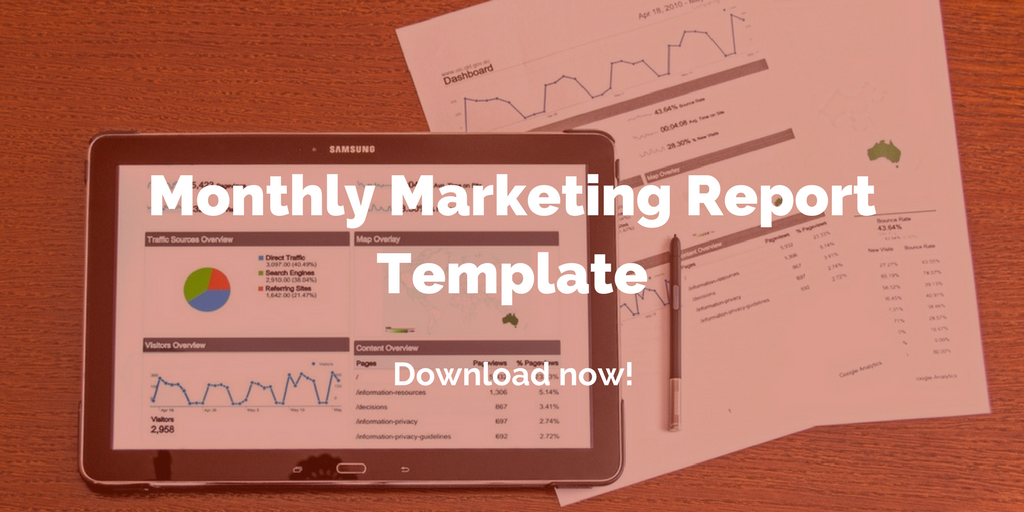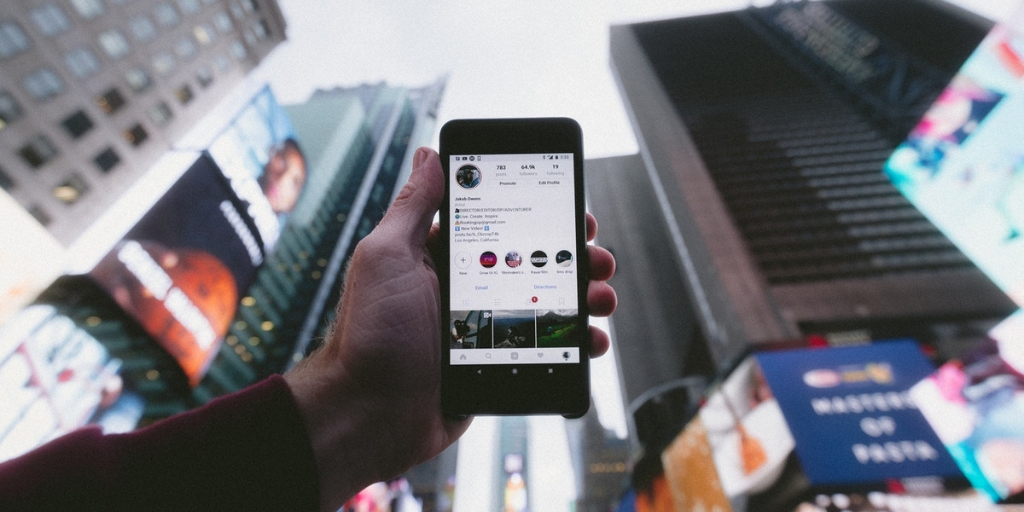
by Jennifer Hart Yim | Dec 12, 2024 | Marketing
Trade show marketing has become a cornerstone strategy for logistics companies seeking to expand their market presence. In this guide, we’ll explore how to maximize your logistics trade show marketing investment and generate qualified leads that convert.
Major logistics trade shows like MODEX and ProMat serve as crucial networking hubs for supply chain pros. A well-executed trade show strategy can generate 200-300 qualified leads per event, making it one of the most effective marketing channels for logistics providers. Here’s how you can make your next show the best yet.
Creating Your Logistics Trade Show Marketing Strategy
Pre-Show Preparation
Success in logistics trade show marketing isn’t about luck – it’s about meticulous planning and execution. The most successful companies typically begin their preparation three to six months before the event, ensuring every detail is carefully considered. Here are 3 ways to do that.
- Set measurable goals: Target specific metrics such as “schedule 30 qualified demos” or “secure 5 partnership meetings with retailers”
- Create a pre-show marketing calendar:
- Send personalized invitations to top prospects 6 weeks before the event
- Launch a LinkedIn campaign highlighting your booth location and key offerings 4 weeks out
- Schedule social media posts featuring behind-the-scenes preparation 2 weeks prior
- Develop a clear ROI framework: Calculate your cost per lead target based on total exhibition costs (typically $10,000-30,000 for mid-sized shows)
Stand Design and Presence
Your booth is more than just a space – it’s a statement about your company’s capabilities and vision for the future of logistics. The most memorable booths tell a story through their design and interactive elements, creating an immersive experience that draws visitors in and keeps them engaged.
Transform your booth into an experience center by including:
- Live demonstrations of your TMS or WMS
- Digital walls displaying real-time shipment tracking across global routes
- Interactive supply chain optimization simulators
- Climate-controlled storage solution demonstrations
- Video testimonials from current clients running on loop
Maximizing Your Trade Show Investment
The key to maximizing your trade show ROI lies in the delicate balance between attracting quantity and qualifying quality. While it’s tempting to collect as many business cards as possible, successful logistics companies focus on meaningful conversations that uncover genuine opportunities.
Lead Generation Tactics
Modern lead generation at logistics trade shows has evolved far beyond the traditional business card exchange. Successful exhibitors use a sophisticated blend of technology and personal interaction to identify and nurture potential clients. Maximize your time and effort in connecting with prospects by using this strategy.
- Create tiered lead scoring systems:
- Hot leads: Decision-makers with immediate needs (follow up within 24 hours)
- Warm leads: Prospects planning changes within 6 months
- Long-term prospects: Companies researching options for future consideration
- Offer exclusive trade show incentives like:
- 90-day free trial of your logistics software
- Complimentary supply chain audit
- Special pricing for contracts signed within 30 days post-show
Technology Integration
Technology isn’t just part of your service offering – it’s an essential tool for engaging prospects at trade shows. The right technology can help you demonstrate complex logistics solutions in simple, memorable ways (and make your life easier!).
- Deploy AR (Augmented Reality) demonstrations showing:
- Warehouse optimization solutions
- Cross-docking procedures
- Last-mile delivery innovations
- Use RFID-enabled badges to track booth visitor engagement (See? Makes life easier!)
- Implement AI-powered chatbots for initial visitor screening
Post-Show Success Strategies
The days immediately following a trade show are crucial for converting interest into actual business opportunities. The most successful logistics companies understand that prompt, personalized follow-up is essential for maintaining the momentum generated during the show.
Create a structured follow-up system:
- Day 1-2: Send personalized thank you emails with specific reference to conversations
- Day 3-5: Share relevant case studies based on discussed pain points
- Week 2: Schedule virtual demos or consultation calls
- Week 3-4: Present customized solutions and proposals
- Month 2: Check in with prospects who showed interest but weren’t ready to commit
Calculate Logistics Trade Show ROI
Understanding the return on investment from logistics trade show marketing requires a comprehensive approach. While traditional metrics like booth traffic provide basic insights, it’s the deeper dive into performance indicators that truly matter.
Cost Per Lead
This serves as a fundamental benchmark in the logistics industry. With the average cost ranging from $150-275 per qualified lead, companies must carefully balance their exhibition investment against potential returns. This metric becomes particularly crucial when comparing different trade shows or deciding which events deserve larger budget allocations.
Conversion Rates
They tell an even more compelling story. The industry target of 20-30% reflects the high-quality nature of trade show leads compared to other marketing channels. Successful logistics companies achieve these rates by focusing on meaningful conversations rather than collecting business cards. For instance, a company demonstrating its warehouse automation solution might connect with fewer prospects but secure more serious buyers.
Six-month Revenue Generation
Perhaps the clearest picture of trade show success. By tracking deals that close within this window, companies can attribute revenue directly to their trade show efforts. This longer-term view acknowledges the complex sales cycles common in logistics partnerships, where decisions often involve multiple stakeholders and careful evaluation periods.
Social Engagement Metrics
Social metrics have emerged as a valuable supplement to traditional measurements. Beyond simple follower counts, companies track event hashtag usage, LinkedIn post engagement, and video view duration to gauge their brand’s impact during and after the show.
Successful logistics trade show marketing requires a delicate balance of traditional networking and strategic digital follow-up. Those that invest in comprehensive pre-show planning, engage audiences with interactive demos, and maintain consistent post-show communication will stand out. As we move forward, the integration of virtual elements, sustainability practices, and AI-driven engagement tools will continue to reshape how logistics companies approach trade shows. However, the fundamental goal remains unchanged: creating meaningful connections that drive business growth. By implementing the strategies outlined in this guide, logistics companies can transform their trade show presence from a simple marketing expense into a powerful engine for lead generation and business development.
Read more

by Fronetics | Jan 2, 2020 | Blog, Current Events, Logistics, Marketing, Social Media, Supply Chain
Knowing how and when to respond to a social media crisis is crucial for reputation management and preventing future issues.
News travels at lightning speed thanks, in large part, to social media. With the ability to amplify news – both good and bad – you hear, almost daily, about brands battling a social media crisis. Look at Facebook, who is still managing the aftermath of the Cambridge Analytica scandal almost two years after the news broke.
When your company suffers from negative reviews on social media, it hurts. A single post can have a direct impact on your bottom line. That’s why it’s crucial for B2B brands to know how and when to respond to online reviews and comments. Here are four ways to help your company manage a social media crisis.
4 steps to managing a social media crisis
1. Establish policy
We recently wrote about the importance of a social media policy, and there’s never a better time to implement one than during a social media crisis (except for maybe before it happens). When you provide employees with guidelines on how to respond to negative feedback online, you minimize the risk of employees guessing the appropriate response. Because speed is critical in these situations, a social media policy allows your team to respond quickly and confidently.
2. Listen
You know customers are talking about your company, but is the tone a positive one? And if it’s not, how are you responding? Social listening gives you the opportunity to take a negative customer-service situation and not only correct the problem, but deescalate a situation from turning into a crisis.
Through consistent social listening, you’ll understand the difference between grumblings and a significant change in sentiment toward your brand. Though no company is perfect, a personalized response to negative comments on social media shows a genuine concern for your customers and an investment in customer satisfaction.
3. Engage
As we’ve said, time is of the essence. A short, initial response on social media is a must, but your brand needs to follow up with more in-depth messaging. Social media thrives on engagement, and responding to a crisis is no different.
Lauren Teague suggests, “Avoid getting pulled into a long discussion of what went wrong. Instead, try to move the conversation to a more personal channel, like private messaging. You could also offer a phone number, email address, or other means of communicating outside of social media.”
4. Learn
Deep breaths. Once you’ve survived a social media crisis, the experience isn’t over. Take the time to meet with your employees and examine what happened, what worked well, and what needs to change in the event another crisis occurs. Learning how to minimize the damage of a social media crisis will only benefit you when future issues arise.
Give your staff the opportunity to share their experience during the crisis. Insight from your different departments can help determine areas in your social media policy that need updating, including how to prevent similar crises in the future.
Has your company experienced a social media crisis? How did you put out the fire?
Related posts:


by Fronetics | Oct 24, 2019 | Blog, Marketing, Social Media
Facebook Messenger is the latest trend in chatbots for the supply chain. Here are powerful numbers to prove why your brand needs to be active on the messaging platform.
Patience is a virtue of the past. Today’s buyers want (and expect) marketers to actively engage with them throughout the purchasing journey. And offering them generic information won’t work — they want personalized communications based on who they are, what they have purchased in the past, and what they are interested in buying. Businesses can no longer afford a one-size-fits-all communication strategy.
The focus has shifted from passive marketing to engagement, which has marketers scrambling to be everywhere, at all times, to ensure a positive customer experience. In response, we’ve seen an increase in chatbot usage in the supply chain and logistics industries. Chatbots help improve the customer experience through automated systems that emulate human conversation.
Chatbots rely on the popularity of messaging apps. And, luckily for marketers, messaging app usage is on the rise:
- There were 2.18 billion messaging app users globally in 2019. (Statista)
- At the end of 2018, 78% of the world’s smartphone users were messaging every month. (Facebook)
- By 2021, it’s predicted that the global user base for mobile messaging apps will have risen by a further 23%. (Facebook)
- People share more than 17 billion photos on messaging apps every month. (Mobile Monkey)
And though WhatsApp has the highest percentage of users worldwide, Facebook Messenger has taken over as the most popular messaging app in the U.S. With over 1.3 billion monthly users, this powerful messaging platform holds a lot of potential for marketers.
[bctt tweet=”20 billion messages are sent between people and businesses every month.” username=”Fronetics”]
Even though marketers know that Facebook Messenger is a platform they can no longer ignore, supply chain and logistics brands have been slower to jump on board. But if you’re questioning if you should be using Facebook Messenger to engage with audiences, the answer is yes.
Supply chain businesses can use this platform to deliver content, engage with customers one on one, and offer superior personalized customer service, all of which result in high-quality relationships and leads.
Here are some staggering numbers to back up our point.

(Made with Canva)
Final thoughts
What was once thought of a teen social app, Facebook Messenger is now dominating the business world with increasing popularity and no sign of slowing down. In fact, we as a brand have found huge success using Messenger to engage with new leads. In the first 24 hours of using the platform, we were able to set up a meeting with a new prospect. That was just in the first 24 hours. This prospect turned out to be our next client, and the initial connection was all made through Facebook Messenger.
Related posts:


by Fronetics | Jul 23, 2019 | Blog, Marketing, Social Media, Video Marketing
Videos drive greater conversion rates and increased leads. Here are four takeaways from Vidyard’s 2019 State of Video in Business Report.
Highlights:
- Over 82% of businesses reported greater investments in video last year
- Vidyard’s report stated that high-value video content has become a key factor in SEO and ranking.
- Aside from just tracking views, businesses will also track engagement time, drop-off rates, and reach across all channels, as well as the impact of video on lead generation and revenue.
Video Transcript:
Hi I’m Christy LeMire, the Director of Video Strategy at Fronetics, and today I’ll be sharing 4 takeaways from Vidyard’s 2019 State of Video in Business Report.
This report confirmed what us digital marketers already know, video is everywhere. Over 82% of businesses reported greater investments in video last year and it’s no surprise why. Videos drive more sharing, produce greater conversion rates and increase leads.
Here are the 4 key takeaways from the 2019 State of Video in Business Report
-
Video isn’t just for social media
Though Facebook and Snapchat saw over 8 billion video views every day on their platforms, video didn’t stop with social media. Video took center stage in digital marketing and brand awareness. Vidyard’s report stated that high-value video content has become a key factor in SEO and ranking. This trend will continue to grow as marketers begin using video for frequently asked questions and explanations of complex and intricate business details.
-
Short and sweet videos
Marketers used to create highly produced promotional videos for their websites and blogs. But now marketers are focusing on conversational and educational videos created specifically for social media. These casual videos give followers timely updates on industry trends, a behind the scenes look at projects, and interviews with clients and colleagues. The transparency created in these videos brings personality to your business. Marketers will continue to create video for social media, their blog and YouTube channels, resulting in a spike in short-form content like snackable video series.
-
Video experiences focus on engagement
New approaches to video—including series-based content, video podcasts, interactive video, and personalized video—are helping marketers boost engagement and expand audiences. Experts predict we’ll see these new approaches gain more traction as the tools to create them become more user-friendly and best practices become more widely understood.
-
Expanation of video analytics
As video has expanded, so have the needs of video analytics. Businesses will start making use of analytics tools to track video metrics that align with their digital marketing strategy. Aside from just tracking views, businesses will also track engagement time, drop-off rates, and reach across all channels, as well as the impact of video on lead generation and revenue. With more detailed reporting, businesses will see more efficiency and a higher ROI from their video content.
Check out the full report on our blog and find more digital marketing tips on our website at Fronetics.com.
Related posts:


by Fronetics | Mar 28, 2019 | Blog, Content Marketing, Current Events, Logistics, Marketing, Social Media, Supply Chain
Also, this month in social media news: Twitter launches new camera tools to increase visual focus; and Pinterest introduces Catalogs and expands shopping ads.
This month on social media news, we’re seeing a few trends continuing. Platforms are increasingly offering robust analytics tools to content creators in an effort to boost engagement. This time, it’s Twitter rolling out a new tool that gives video publishers insights on optimal post timings. Twitter is also jumping on the “Stories” bandwagon, with its own answer to the trend: a camera feature that allows users to create images similar to Instagram and Facebook Stories.
Also this month, we’re seeing good news for brands when it comes to advertising on social media. Facebook is introducing a feature for premium video advertising, while Pinterest is rolling out multiple tools to help brands sell directly from the platform. Read on for a round-up of social media news.
Social media news for March 2019
Twitter Debuts a New Analytics Tool for Video Publishers
In an effort to provide video publishers with increased data to aid in performance improvement on Twitter, the platform has released the first in a new series of publisher insights tools: Timing is Everything. According to Twitter, the tool “displays historical data showing when audiences are on Twitter watching and engaging with video. This data highlights the best time(s) to Tweet video content with an aim to maximize engagement, conversation, and viewership.”
This is big news for video publishers, including content marketers. Twitter is offering key insights on one of the most important factors in determining social media marketing success: timing. Of course, increased engagement is in the platform’s best interest — and it’s in yours as well. Stay tuned for the release of more insight tools from Twitter in the coming weeks and months.
Facebook Announces Facebook Showcase for Premium Video Advertising
Facebook has debuted Facebook Showcase, a new premium video ad program that gives online video and TV ad buyers participating in the upfront selling cycle new opportunities to reach their target audiences on the platform. Showcase is currently available for campaigns targeting U.S. audiences and includes In-Stream Reserve, In-Stream Reserve Categories, and Sponsorships.
Facebook’s announcement is another big one for advertisers. Showcase will help advertisers connect with people through premium content and unique video experiences and can help reach younger-skewing audiences that are increasingly difficult to reach on TV.
Twitter Launches New Camera Tools to Increase Visual Focus
While platforms like Facebook and Instagram are increasingly ushering users towards their respective Stories features, Twitter is introducing a camera tool which will let users capture Stories-like images, including overlays and a searchable element. In addition to bringing the platform on board with the Stories trend, it ushers in more visual content options.
[bctt tweet=”Twitter is introducing a camera tool which will let users capture Stories-like images, including overlays and a searchable element.” username=”Fronetics”]
Swiping left on your Twitter timeline from your mobile device will take you to the new camera. There you can capture an image or video, or even go Live straight from Twitter, rather than having to be routed through Periscope. Next, users have the option to add details to the image, including hashtags suggested based on location. Stickers and filters aren’t here yet, but no doubt they’ll be coming soon.
Pinterest Introduces Catalogs and Expands Shopping Ads
Pinterest has rolled out a series of new tools and products to help brands sell their products directly on the platform. The company has debuted Catalogs, which allows brands to upload their full product portfolios to Pinterest and easily turn each item into dynamic, shoppable product pins. In addition, Pinterest has introduced personalized shopping recommendations for style, home, beauty, and DIY boards.
The platform’s rollouts are good news for brands and speaks to the company’s pro-business corporate mindset: “People come to Pinterest in a shopping mindset open to discovering products, which creates a great connection between Pinners and businesses. Pinners are looking for inspiration, and brands help make that inspiration a reality.”
What other social media news has your attention this month?
Related posts:









